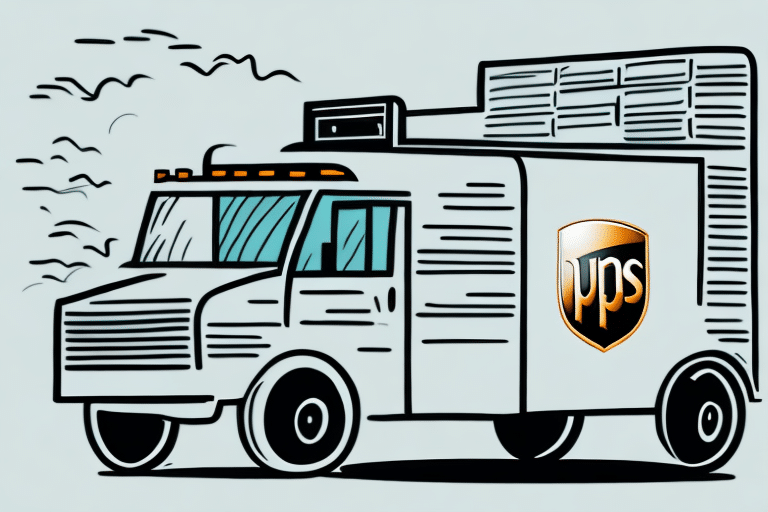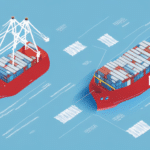Understanding the UPS Delivery Surcharge to Canada
If you regularly use UPS to send and receive packages to and from Canada, you may have noticed a delivery surcharge added to your bill. While it may seem like an unnecessary expense, the surcharge results from the unique challenges and expenses involved in delivering packages to Canada. In this article, we explore everything you need to know about the UPS delivery surcharge to Canada, including its causes, impacts, and ways to mitigate it.
Why is there a Delivery Surcharge to Canada on UPS Packages?
There are several reasons why UPS applies a delivery surcharge to packages going to Canada:
- Customs and Duties: The Canadian government imposes various fees and taxes on imported goods, including customs and duties charges. UPS bears these costs when delivering packages across the border, which can be significant depending on the value and type of goods being shipped.
- Documentation and Clearance: Shipping to Canada requires special documentation, labels, and clearance procedures that are not necessary for domestic shipments. UPS invests in additional resources and staff to handle these tasks, increasing their overall costs.
- Distance and Transportation Costs: Canada is a large country with vast distances between cities and towns. UPS covers more ground and incurs higher transportation costs when delivering packages to Canada, which are passed on to the customer through a delivery surcharge.
According to a 2023 Trade and Industry Report, cross-border shipping costs have increased by 12% over the past year due to rising fuel prices and logistical challenges.
How the UPS Delivery Surcharge to Canada Affects Online Shoppers
Online shoppers who frequently purchase items from retailers that use UPS to ship to Canada may notice a significant increase in their shipping costs due to the delivery surcharge. This can make some products significantly more expensive than similar ones sold locally, forcing shoppers to choose between paying higher prices or finding alternatives.
- Higher Shipping Costs: The surcharge directly increases the total cost of purchasing international items.
- Limited Product Selection: Higher shipping costs may lead shoppers to seek out Canadian alternatives, potentially limiting their choices.
One alternative for Canadian online shoppers is to look for retailers that use different shipping carriers, such as FedEx or Canada Post. These carriers may not have the same delivery surcharge as UPS, resulting in lower shipping costs for the shopper.
Another option is to consider purchasing from Canadian retailers instead of international ones. While the selection may be more limited, the absence of cross-border shipping fees and surcharges can make the overall cost of the product more affordable.
How the UPS Delivery Surcharge to Canada Affects Small Businesses
Small businesses that rely on UPS to deliver products to customers in Canada can be significantly impacted by the delivery surcharge. The extra cost can eat into profits, making it challenging for businesses to remain competitive. This is especially true for small businesses that cannot negotiate better rates with UPS.
- Profit Margins: Increased shipping costs reduce overall profit margins.
- Customer Satisfaction: Passing on extra costs to customers can lead to dissatisfaction and potentially lost business.
- Operational Challenges: Adjusting shipping schedules or finding alternative shipping methods adds complexity to business operations.
According to a 2022 survey by the Canadian Federation of Independent Business, over 60% of small businesses experienced increased shipping costs due to cross-border surcharges, impacting their bottom line.
Historical Analysis of the UPS Delivery Surcharge to Canada
The UPS Delivery Surcharge to Canada has been in place for many years and has undergone several changes and updates over time. Initially, the surcharge was a flat rate added to each package. However, in recent years, UPS has switched to a percentage-based system, which considers the total value of the package and the type of shipping service being used.
The shift to a percentage-based system was implemented to better align the surcharge with the actual cost of delivering packages to Canada. This change addressed customer concerns regarding the fairness of a flat rate, which did not account for the value or size of the package. The percentage-based system provides a more accurate reflection of the costs associated with delivering packages to Canada, offering customers a more transparent and equitable pricing structure.
Recent updates in 2023 include dynamic pricing models that adjust surcharges based on real-time logistics data, such as fuel prices and seasonal demand fluctuations.
How to Calculate the UPS Delivery Surcharge to Canada
Calculating the UPS Delivery Surcharge to Canada involves several factors:
- Package Value: The total value of the package affects the surcharge percentage.
- Shipping Service: Different UPS shipping services (e.g., ground, express) have varying surcharge rates.
- Package Size and Weight: Oversized or overweight packages may incur additional fees.
UPS provides a surcharge calculator on their website to help estimate the cost before shipping your package. It's essential to consider that certain items may be restricted or prohibited from being shipped to Canada, which could also affect the surcharge. Always check with UPS or consult their website for a complete list of restrictions and fees before shipping your package.
Tips for Avoiding the UPS Delivery Surcharge to Canada
If you are a frequent user of UPS to ship packages to Canada, there are several strategies you can employ to avoid the delivery surcharge:
- Use Alternative Shipping Carriers: Consider using carriers like FedEx or DHL that may offer more competitive rates or no surcharge.
- Negotiate Rates: If you have high shipping volumes, negotiate better rates with UPS.
- Limit Package Quantity: Reducing the number of packages sent can help minimize surcharge costs.
- Optimize Package Size and Weight: Shipping smaller and lighter packages can reduce additional fees.
Another option is to use UPS's own shipping software, UPS WorldShip. This software allows you to create shipping labels and manage your shipments directly with UPS, which can sometimes result in lower rates and waived surcharges. Additionally, enrolling in UPS's loyalty program, UPS My Choice, can provide access to various discounts and promotions.
Are There Alternatives to Using UPS for Shipping to Canada?
Yes, there are several alternative shipping carriers that you can use to ship to Canada, such as FedEx, DHL, and Canada Post. These carriers may offer more competitive rates or not charge a delivery surcharge at all. However, it's essential to compare shipping rates and services before making a decision to ensure you choose the best option for your needs.
What Are Other Shipping Carriers' Surcharges for Delivering to Canada?
Like UPS, other shipping carriers also charge delivery surcharges when shipping packages to Canada. FedEx and DHL impose surcharges, although their rates and structures vary:
- FedEx: Charges similar surcharges based on package value, size, and shipping service.
- DHL: May offer competitive rates or specialized services that reduce overall shipping costs.
It's important to compare all carriers' surcharges to find the best option for your shipping needs.
How Can You Negotiate with UPS for Lower Delivery Surcharges?
If you are a frequent user of UPS for shipping, you may be able to negotiate better rates or lower delivery surcharges. Consider the following steps:
- Contact Your UPS Account Representative: Discuss your shipping volumes and explore available discounts.
- Provide Shipping Volumes: Higher shipping volumes can give you leverage to negotiate better rates.
- Highlight Loyalty: Long-term customers may receive preferential rates.
Reaching out to UPS's customer service department with these points can improve your chances of securing more favorable rates.
The Impact of COVID-19 on UPS Delivery Surcharges to Canada
The COVID-19 pandemic disrupted logistics and supply chains worldwide, leading to increased costs for shipping carriers like UPS. While the delivery surcharge to Canada remains in place, UPS experienced significant delays and cancellations due to restricted travel and border closures. This led to a backlog of packages and increased shipping costs.
According to a 2023 report by the UPS Newsroom, global shipping delays increased by 25% during the pandemic, contributing to higher operational costs and the continuation of surcharges.
What Canadian Import/Export Laws Affect the UPS Delivery Surcharge?
Several Canadian import/export laws affect the UPS Delivery Surcharge, including:
- Customs Act: Governs the importation of goods into Canada, imposing fees and duties.
- Excise Tax Act: Imposes taxes on certain goods, affecting overall shipping costs.
- Sales Tax Act: Includes regulations on the collection of sales taxes for imported goods.
These laws impose various fees and taxes on imported goods, which UPS must cover when delivering packages across the border, thereby influencing the delivery surcharge.
The Future of the UPS Delivery Surcharge to Canada
The future of the UPS Delivery Surcharge to Canada remains uncertain. Factors that may influence its evolution include:
- Government Trade Policies: Changes in trade agreements or tariffs can impact surcharge structures.
- Market Demand: Shifts in consumer behavior and shipping volumes may necessitate adjustments.
- Technological Advancements: Innovations in logistics and shipping technology could reduce costs.
UPS may continue to refine its surcharge model to better reflect operational costs and maintain competitiveness in the market.
How Different Industries Are Affected by the UPS Delivery Surcharge in Canada
The UPS Delivery Surcharge to Canada affects various industries in distinct ways:
- E-commerce: The surcharge raises shipping costs and decreases profit margins, challenging online retailers.
- Manufacturing: Industries relying on large freight shipments may see minimal impact, as the surcharge represents a smaller percentage of total shipment costs.
- Retail: Brick-and-mortar stores expanding online may face higher logistics costs.
Understanding industry-specific impacts can help businesses strategize effectively to mitigate surcharge-related challenges.
Case Studies of Businesses That Have Successfully Navigated the Challenges of the UPS Delivery Surcharge in Canada
Several businesses have successfully navigated the challenges of the UPS Delivery Surcharge in Canada by implementing creative solutions:
- Free Shipping Offers: Some businesses absorb the surcharge cost and offer free shipping to Canadian customers as a competitive advantage.
- Negotiated Rates: Businesses negotiate better rates with UPS based on shipping volumes, reducing overall surcharge costs.
- Alternative Carriers: Switching to carriers like FedEx or DHL that offer lower surcharges or better rates for international shipping.
These strategies have enabled businesses to maintain profitability and customer satisfaction despite the added shipping costs.
A Guide to Understanding International Shipping Regulations and Fees
Shipping globally requires a comprehensive understanding of international shipping regulations and fees:
- Customs Clearance: Ensure all necessary documentation is accurate and complete to avoid delays and additional fees.
- Duties and Taxes: Be aware of the applicable duties and taxes for the destination country to accurately calculate total shipping costs.
- Restricted and Prohibited Items: Familiarize yourself with items that cannot be shipped to certain countries to avoid legal issues and additional fees.
Proper research and preparation can streamline the shipping process and minimize unexpected costs.
Exploring Options for Customs Clearance, Duties, and Taxes When Shipping with UPS
UPS offers several options for handling customs clearance, duties, and taxes when shipping internationally:
- UPS Brokerage Services: UPS acts as a customs broker, handling clearance for a fee.
- Automated Tools: UPS provides tools to estimate and pay for duties and taxes in advance, simplifying the shipping process.
- Tariff Classification: Proper classification of goods ensures compliance with import regulations and accurate duty calculations.
Exploring all available options and comparing costs and services can help you choose the most cost-effective and efficient clearance method.
Analyzing Customer Feedback on the Impact of Delivery Surcharges on Their Shopping Experience with UPS
Customer feedback regarding delivery surcharges offers valuable insights into their impact on the shopping experience with UPS:
- Shipping Cost Sensitivity: Many customers express that high surcharges deter them from completing purchases.
- Preference for Local Retailers: Customers may prefer Canadian retailers to avoid additional shipping costs.
- Feedback on Transparency: Clear communication about surcharges can improve customer satisfaction despite higher costs.
Analyzing such feedback helps businesses understand customer priorities and adjust their shipping strategies accordingly.
The Role of Technology in Mitigating or Avoiding Delivery Surcharges with UPS
Advancements in technology can help mitigate or avoid delivery surcharges with UPS through:
- Automated Estimation Tools: Tools that accurately estimate duties and taxes can help businesses price their products more effectively.
- Shipping Optimization Software: Software that optimizes package size, weight, and routing can reduce overall shipping costs.
- Alternative Logistics Solutions: Technology-driven logistics solutions can streamline the shipping process, potentially lowering surcharges.
Leveraging technology enables businesses to manage shipping costs more efficiently and reduce the financial impact of surcharges.
Expert Opinions and Insights into Navigating and Making Sense of Delivery Surcharges When Shipping with UPS to Canada
Experts provide valuable insights into navigating and understanding delivery surcharges when shipping with UPS to Canada:
- Negotiation Strategies: Experts recommend negotiating based on shipping volume and long-term partnerships.
- Cost-Benefit Analysis: Assessing the overall benefits of using UPS versus alternative carriers can inform better shipping decisions.
- Utilizing Technology: Implementing shipping and logistics software to optimize shipping practices can reduce surcharge impacts.
These expert insights can guide businesses and individuals in making informed decisions to manage and mitigate the costs associated with delivery surcharges.






















